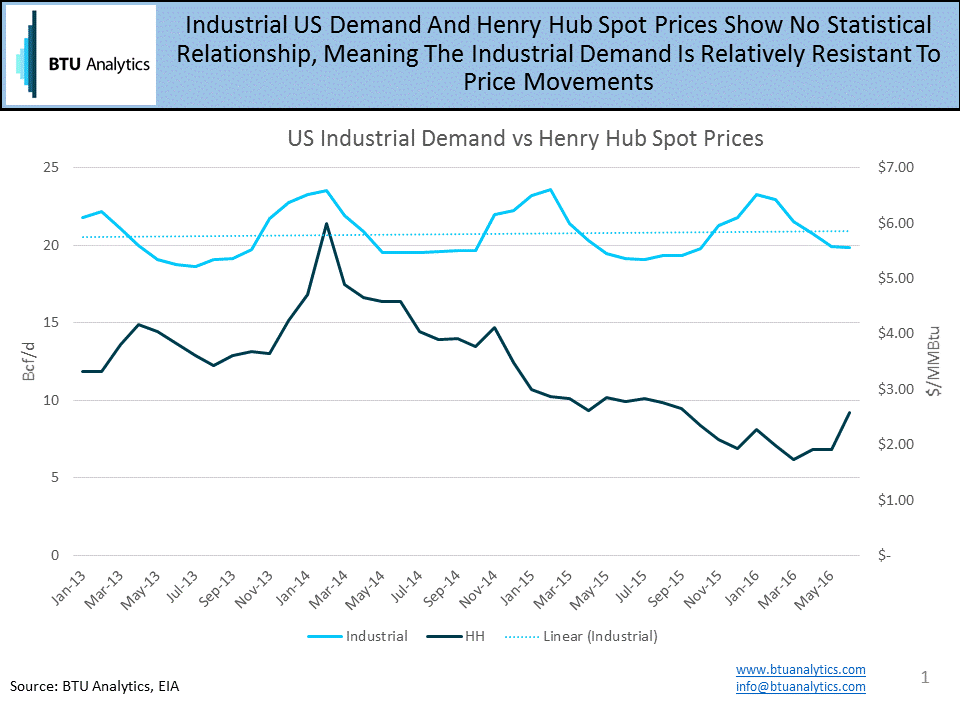Pipeline constraints out of the Northeast, limited investment in dry gas plays over the past twelve months and growing demand from LNG, power and exports to Mexico are potentially setting up the North American gas market for significant volatility should a cold winter take hold. What levers can be used to balance the market should supply be unable to respond promptly? Today, we focus on industrial demand.
It’s a line of thought that on the surface seems to be logically sound: a decrease in natural gas prices should lead to higher industrial demand. However, as is often the case in our line of work, the data suggests otherwise. Given that Henry Hub spot prices went as low as dollar handles for the monthly averages of the first five months of this year, and have been rising into the three-dollar range for a month now, the price sensitivity of gas demand is a hot topic.

The graph above shows US industrial demand as reported by the EIA against the Henry Hub spot price. Industrial demand, like residential/commercial and power demand, follows a seasonal trend. In the winter, this form of demand rises, then drops back down in the summertime. Despite the promise of significant growth in industrial demand on the back of low energy prices, industrial demand hasn’t grown significantly in the past three years. A trend line on the graph above shows a very shallow slope.
This is in spite of a significant decrease in prices over the last three and half years. From the chart, it appears that industrial demand is relatively inelastic to the price of gas in the short term. Running through some of the standard measures of linear relationships (which is not the end all be all, for reasons of which are well outside of the scope of this article) shows that there is essentially no relationship between industrial demand and prices in the short term.
The importance of this comes through in the overall gas supply and demand story. BTU Analytics’ latest forecasts indicate that the market could be caught short if the winter of 2016/2017 is colder than normal. A shortage would drive up prices, and economic theory suggests that demand should come down as a response to the higher prices. If industrial demand doesn’t shift downwards with price increases, then either another piece of the demand side must come off to compensate, or production must grow at a faster pace and to higher levels. While industrial demand is not the only piece of the demand story, it is a large piece, and its short term inelasticity limits the levers that can be called upon to balance the market.
To get a more detailed view on BTU Analytics’ natural gas supply and demand outlook, check out the Northeast Quarterly.









